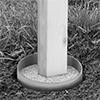Filter by
Drill Bit Size
Maximum Drilling Depth
Length
Drill Bit Point Type
Finish
Export Control Classification Number (ECCN)
DFARS Specialty Metals
Handle Material
Decimal Size Equivalent
For Drilling Type
Shank Size
Bit Style
Sold As
Drive Style
Facility and Grounds Maintenance
Containers, Storage, and Furniture
Fabricating and Machining
Fastening and Joining
Measuring and Inspecting
Fluid Handling













































